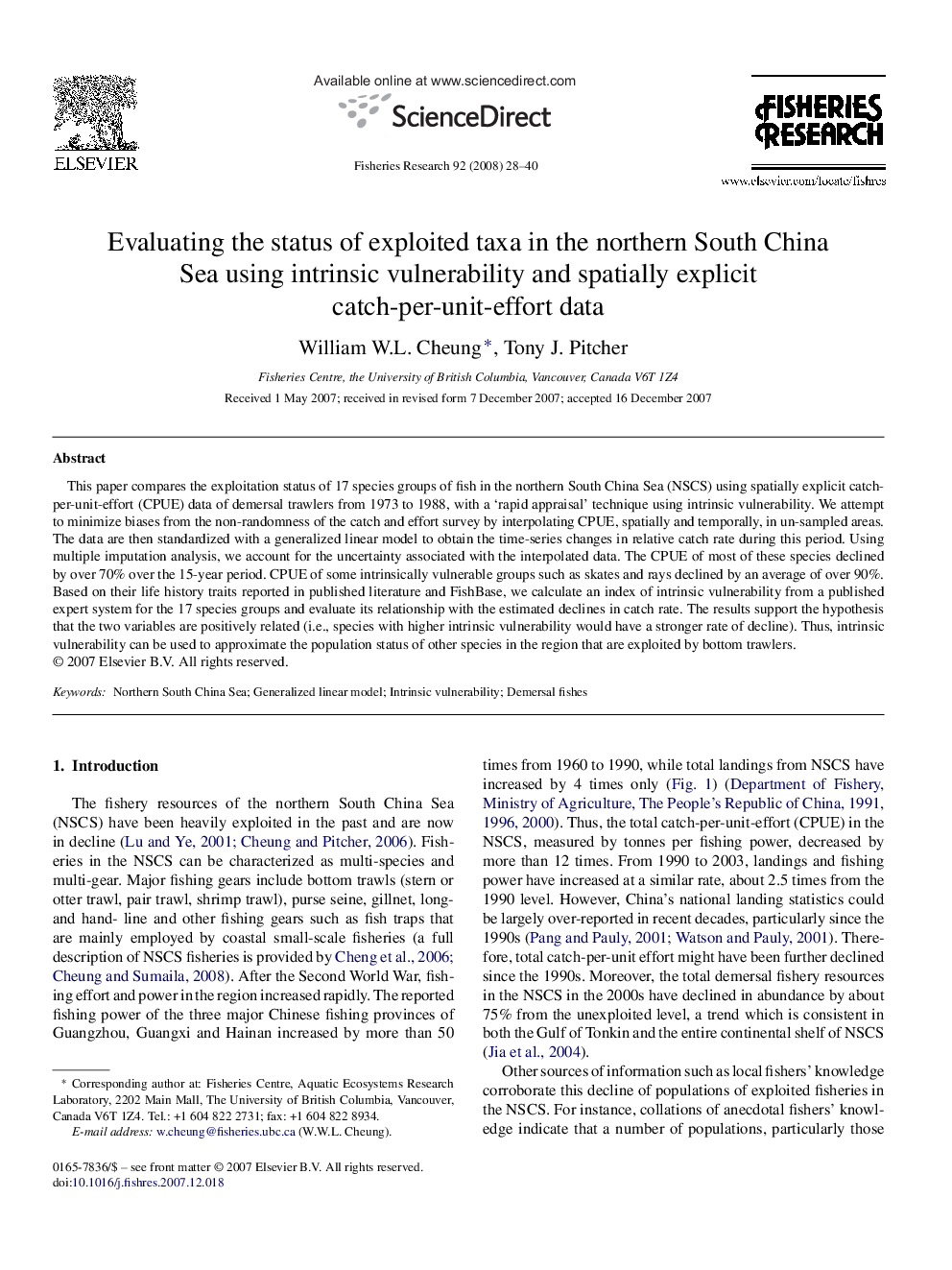| Article ID | Journal | Published Year | Pages | File Type |
|---|---|---|---|---|
| 4544465 | Fisheries Research | 2008 | 13 Pages |
This paper compares the exploitation status of 17 species groups of fish in the northern South China Sea (NSCS) using spatially explicit catch-per-unit-effort (CPUE) data of demersal trawlers from 1973 to 1988, with a ‘rapid appraisal’ technique using intrinsic vulnerability. We attempt to minimize biases from the non-randomness of the catch and effort survey by interpolating CPUE, spatially and temporally, in un-sampled areas. The data are then standardized with a generalized linear model to obtain the time-series changes in relative catch rate during this period. Using multiple imputation analysis, we account for the uncertainty associated with the interpolated data. The CPUE of most of these species declined by over 70% over the 15-year period. CPUE of some intrinsically vulnerable groups such as skates and rays declined by an average of over 90%. Based on their life history traits reported in published literature and FishBase, we calculate an index of intrinsic vulnerability from a published expert system for the 17 species groups and evaluate its relationship with the estimated declines in catch rate. The results support the hypothesis that the two variables are positively related (i.e., species with higher intrinsic vulnerability would have a stronger rate of decline). Thus, intrinsic vulnerability can be used to approximate the population status of other species in the region that are exploited by bottom trawlers.
